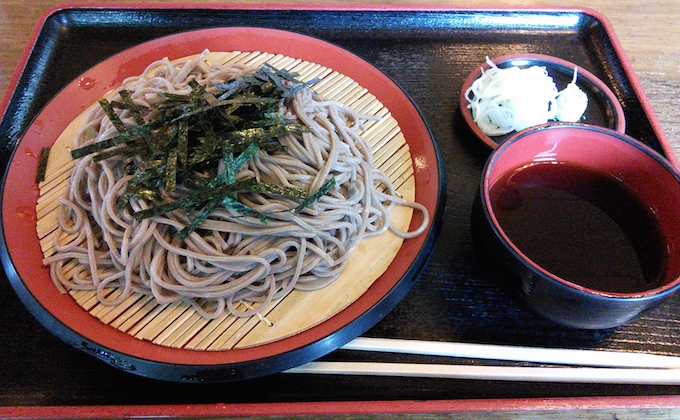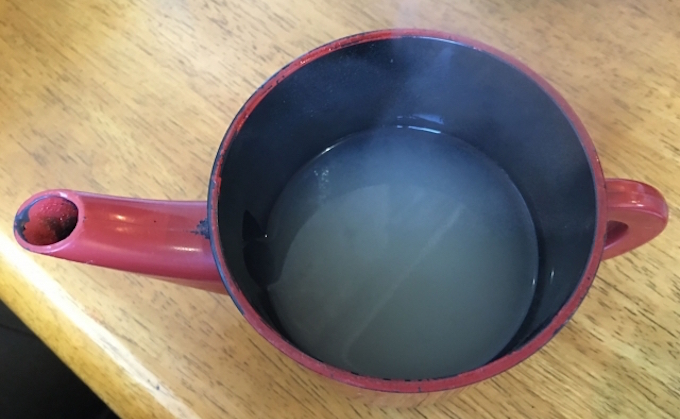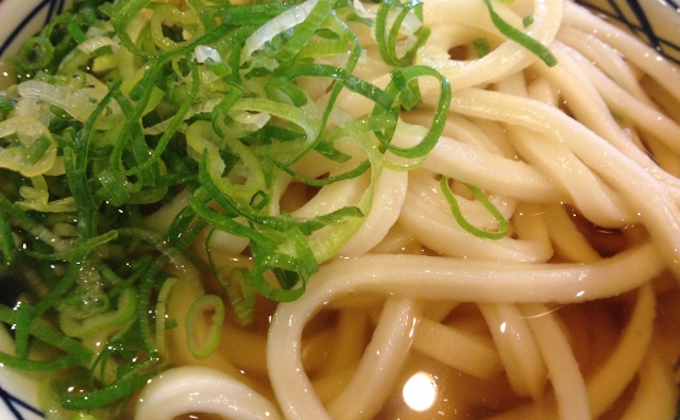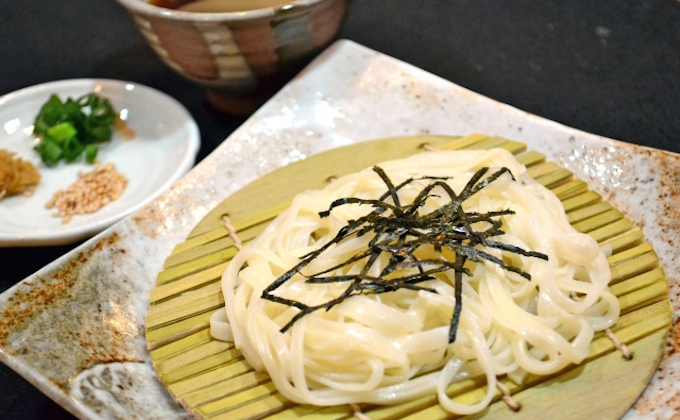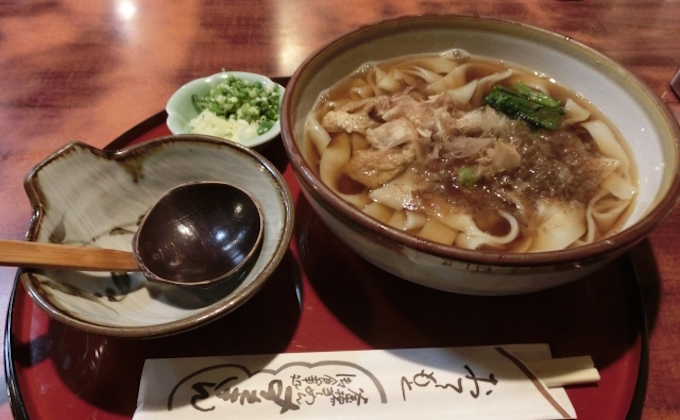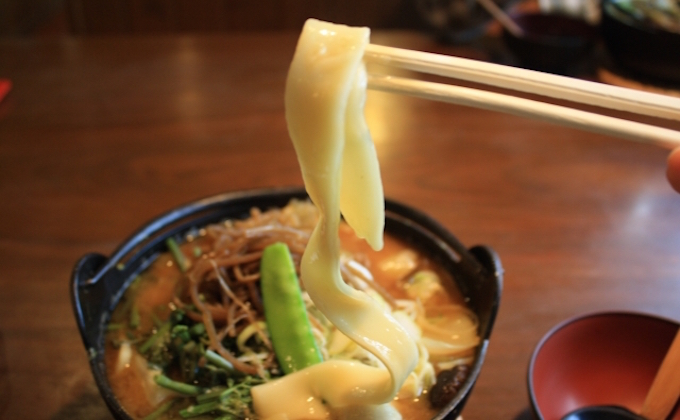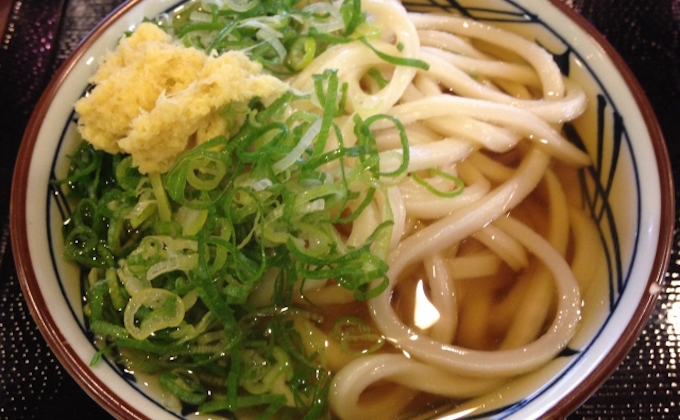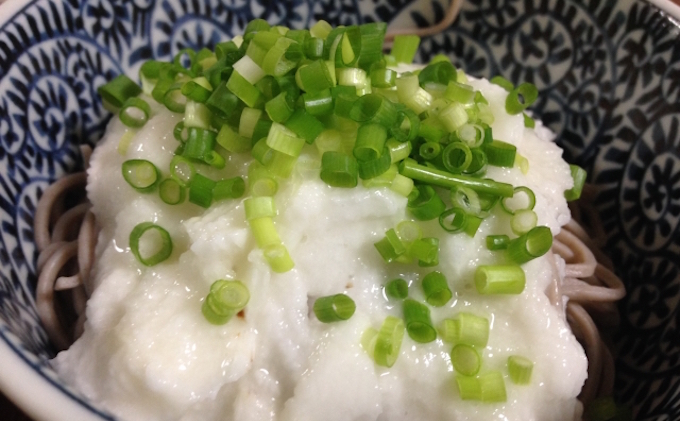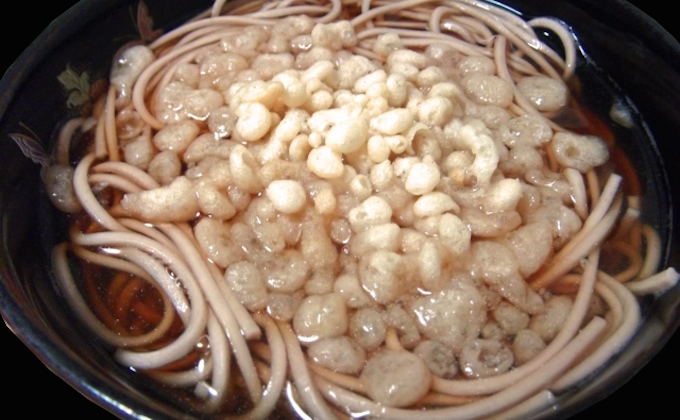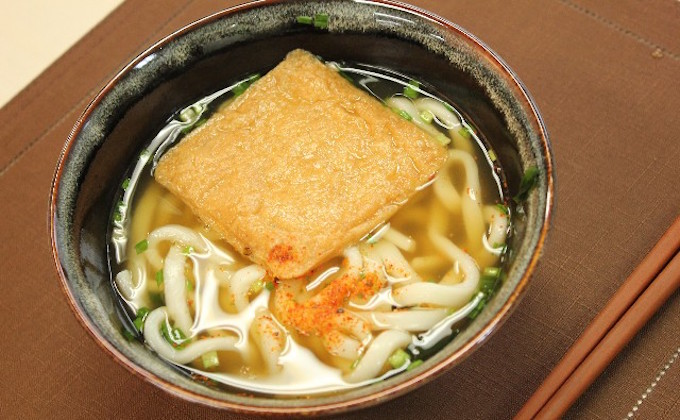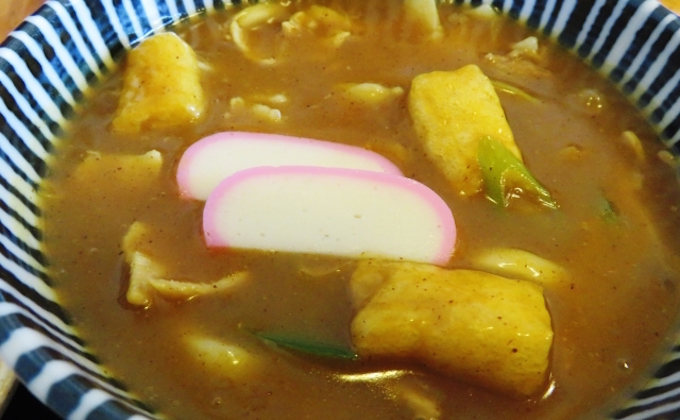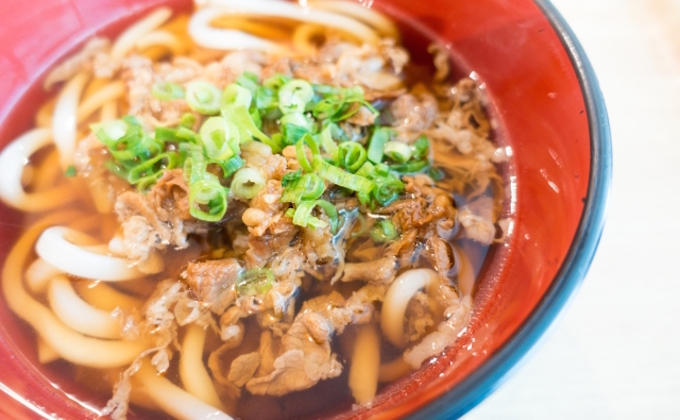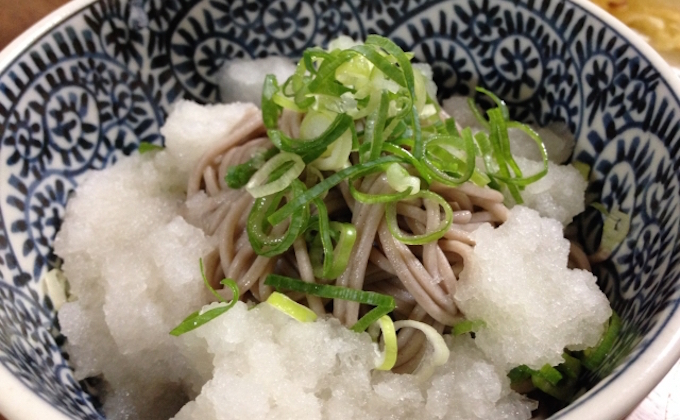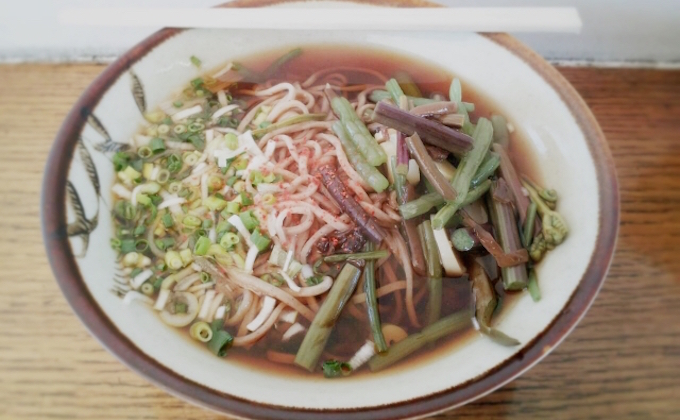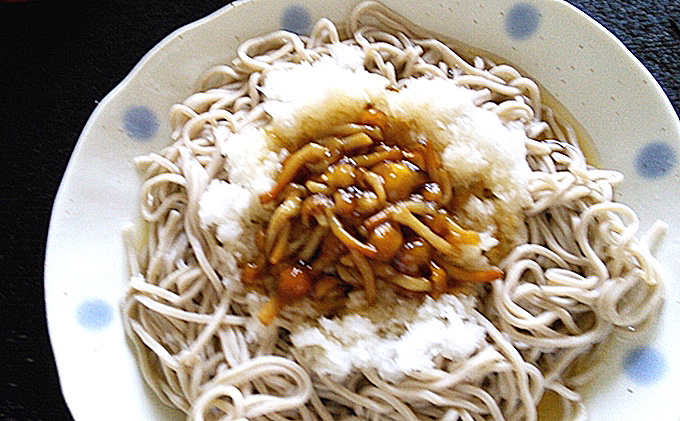TRG Info and Advice
Soba / Udon
What is soba?
“Soba” refers to buckwheat noodles, which are representative of Japanese food culture, made from powdered buckwheat seeds.
Ingredients in soba: buckwheat flour, liaisons (mainly wheat flour, egg, grated yam, etc.) and water
How to Eat Soba
The common, Japanese way of eating soba is to make a slurping sound when sucking up the noodles.
You can choose between two ways of eating soba when you make your order: soba in warm soup or soba dipped in a cold broth.When you eat cold soba, you pick up a mouthful of soba with your chopsticks and dip it in the broth served in a separate bowl.*There are some dishes where it is unnecessary to choose between the two ways; Curry Nanban Soba (warm soba noodles with curry-flavored soup), for example.
Health Aspects
Soba is rich in vitamins B1 and B2, so it is good for recovery from fatigue and developing resistance to illnesses.
In addition, soba has abundant vegetable protein. It contains plenty of rutin, a type of polyphenol, which has active antioxidants that help get rid of reactive oxygen.
It is popular as a low-calorie food, too.
What is "sobayu"?
Sobayu is the hot water in which soba has been boiled. It is usually served in a container called a yuto (lacquered pot), as a beverage to accompany dipping soba.
Sobayu is, generally, poured into the remaining dipping sauce, and the mixture is consumed as a close to the meal.
Condiments
Condiments are used in small amounts, to boost one’s appetite by adding aroma and color to the dishes, making the flavors more distinct and profound.
The main condiments for soba are “green onion,” “wasabi” (Japanese horseradish), “ichimi” (cayenne pepper powder), “shichimi” (seven flavored chili pepper), “ginger,” “grated daikon radish,” “laver,” “sesame,” “yuzu citron,” “green perilla” and “Japanese ginger.”
The History of Soba
The cultivation of Soba has a very long history, and it is thought that it might have been grown since the beginning of the Jomon era (about 9,300 years ago). There is a theory that soba originated somewhere around Yunnan-Guizhou Plateau in Southwestern China, from where soba is said to have been introduced into Japan.
In the Jomon era, soba was mainly consumed in the form of unprocessed buckwheat seeds. In the Kamakura era, after a quern was introduced from China, milling a large amount of grain became possible, and the use of wheat and buckwheat flour for food spread rapidly. For this reason, perhaps, soba was referred to frequently in documents of the Kamakura to Muromachi eras, and cuisine using buckwheat flour steadily and definitely increased.
“Sobagaki” (buckwheat dumplings), which can be made most easily, heads the list, followed by “Ukifu,” “Tsumire,” and “Suiton,” all of which are made by boiling sobagaki in a pot. One way of preparing was to cook flattened dumplings in a pot, and then dip them in a dipping sauce seasoned with miso or soy sauce. Other varieties included thinly grilled “Oyaki” and “Senbei,” “Soba Manju” with sweet red bean paste; “Soba Dango,” which are skewered balls and; and so on and so forth.In the Muromachi era soba was eaten even more frequently.
Compared with wheat flour, though, which was similar to in consistency to the ground soba dumplings and came to be eaten in noodle-form in the Muromachi era, less sticky soba flour took more time to be accepted as noodles.It was a little before the Edo era that soba began to be eaten as noodles. At that time, it was called “Sobakiri.”Soba in those days was “steamed Sobakiri,” something like warm Zaru-soba, a style of eating which lasted until around the end of the 17th century.It is said that wheat flour came to be used as a liaison for soba in the late Genroku era (1688-1704) at the earliest.Documents have it that there were as many as 3,763 soba restaurants in Edo-fu (Edo Prefecture, now Tokyo) in the late Edo era (around 1860).
What is udon?
Udon refers to noodles made by adding a little salt water to wheat flour, then kneading and cutting it into long, thin strips before boiling. Udon is also representative of traditional Japanese food culture, and its main feature is a smooth texture. White udon noodles are thicker and more filling than soba.
Ingredients in udon: wheat flour, salt and water
How to Eat Udon
Like soba, the common, Japanese way of eating udon is to make a slurping sound when you eat it. Also like soba, you can choose between two ways of eating when you place your order: udon in a warm soup or udon dipped in a cold broth. When you eat cold udon, you pick up a mouthful with your chopsticks and dip it in the sauce in a separate bowl. *There are several dishes where it is unnecessary to choose hot or cold: Curry Nanban Udon (warm udon noodles with curry-flavored soup), for example.
Health Aspects
Compared with soba, udon is less nutritious. It can still be called a healthy food, however, as it has fewer carbohydrates than rice and bread, and digests easily.
Condiments
Condiments are used in small amounts to boost one’s appetite by adding aroma and color to the dishes, making the flavors more distinct and profound, and to add medicinal value.
The main condiments for udon are “green onion,” “wasabi” (Japanese horseradish), “ichimi” (cayenne pepper powder), “shichimi” (seven flavored chili pepper), “ginger,” “grated daikon radish,” “laver,” “sesame,” “Japanese citron” and “green perilla.”
History of Udon
It is said that Japanese udon noodles were introduced from China. In Kagawa Prefecture there is a theory that Kukai introduced the technique for making noodles from Tang (China) in the Nara era.100 years before that, however, a confectionary called “sakuben” had already been introduced from Tang, and this later came to be called “muginawa,” which is said to have been the prototype of “somen” (thin wheat noodles) and “Goto Udon” of Nagasaki.In the Nara era in which Kukai lived, udon is said to have looked like crushed dumplings, and it is considered that present-day, long udon came to be made in the early Edo era.Actually, three Udon restaurants are depicted in “Konpira Sairei-zu” (Pictures of Konpira Festival), the oldest paintings on a folding screen in Kagawa Prefecture, which were painted between 1688 and 1704.
Afterwards, a variety of dishes such as Tempura Udon, Tamago-toji Udon (udon in egg-drop soup), Kamo Nanban Udon (udon with duck meat), etc. were developed from the middle to late Edo era. At present, many types of udon, such as Goto Udon, Sanuki Udon, Inaniwa Udon, Kishimen (noodles made in flat strips) and Hoto (Yamanashi’s local dish made by stewing flat udon noodles and vegetables in miso soup) are made in various districts. Udon is representative of traditional Japanese food culture, and has been loved, invariably, since the Edo era.
Standard Varieties of Soba and Udon
Zaru / Mori
Boiled noodles, made firm in cold water, served on a bamboo sieve, and with a thick dipping broth.
Tororo or Yamakake
Noodles with a mixture of grated Japanese, or Chinese, yam with beaten egg whites on top.
Tempura
Noodles with tempura of prawn, squid, vegetables (mixed vegetables) and/or other ingredients on top.
Nanban
Noodles cooked with chili pepper, green onion, and other ingredients. ・Kamo Nanban (Duck meat is used.) ・Tori Nanban (Chicken is used.) ・Niku Nanban (Meat, mainly pork, is used.) ・Curry Nanban (Noodles in a soup made by adding curry powder to soba sauce and making it pulpy with dogtooth violet starch.)






